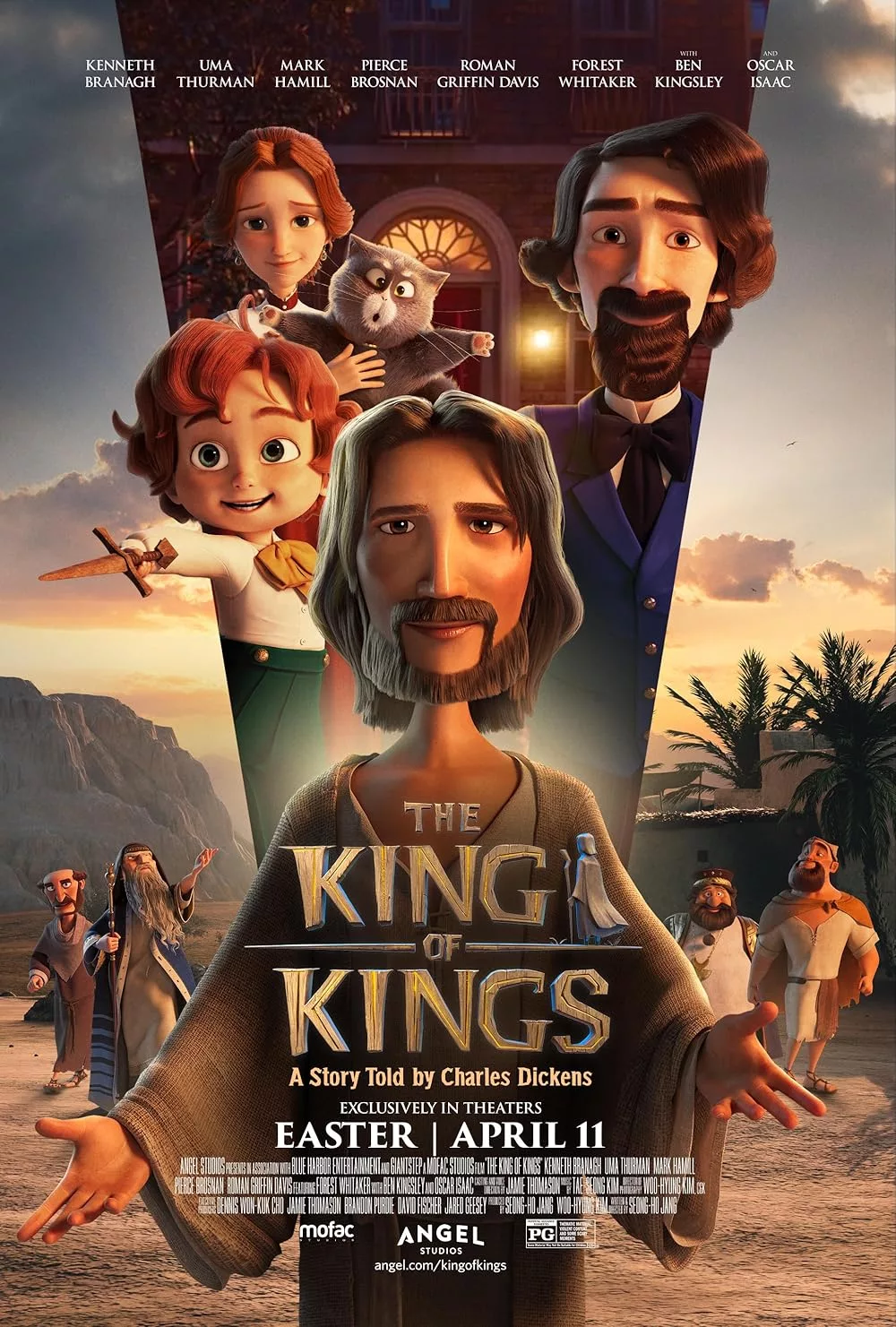I vividly remember Sunday school from childhood, and the animated feature “The King of Kings” is the kind of movie that would’ve been shown in class over two weekends. Distributed by the Christianity-centered Angel Studios, and written and directed by first-timer Jang Seong-ho (a visual effects master from Korean cinema), it is less of a fully satisfying animated feature that works on its own terms than a teaching tool that is clearly intended as such. It’s actually based on a teaching tool from another century: Charles Dickens’ “The Life of Our Lord,” which Dickens based on stories that he used to tell his own children at bedtime.
There’s a framing device wherein Dickens (voiced by Kenneth Branagh) tells the story that we’re all watching. It’s sparked by events in the opening sequence in which Dickens’ boisterous son makes an unfortunate scene during a theatrical reading of “A Christmas Carol” by Dickens (a devoted stage performer who remained involved in theater, including as a one-man show performer, long after he became a famous novelist). The boy is obsessed with King Arthur. Dickens informs him and his siblings that the legend of King Arthur is, like so many other stories—including “A Christmas Carol”—influenced by the New Testament.
And then we’re off to the races. The movie sprints through major points in the story, including the birth of Jesus in a manger in Bethlehem, the growth of his “flock” and his increasing notability as a thorn in the side of the Roman occupation, various major and minor miracles, and of course the condemnation to death, the scourging and crucifixion, and the resurrection. Sometimes the story cuts back to Dickens and/or his kids reacting, and other times he and his son will appear as background characters or witnesses to something that’s happening in Jesus’ story, which gets weird when Jesus starts talking back to people like a chatbot asking a website visitor if they need help with anything.
The three-dimensional, computer-generated animation will be familiar to viewers, as it’s got the same stylistic defaults we see in a lot of Disney-Pixar and DreamWorks cartoon features: characters with sticklike bodies and huge Funko Pop heads whose movements are a little too smooth even when they’re supposed to be awkward or frenzied. Thankfully, there’s no contemporary slang to “modernize” the characters, nor are there any nostalgic needle-drops of pop songs that parents and grandparents enjoyed in their youth to keep them from zoning out, so thanks for the small favors.
But things still feel a bit off once we get to the tragic part of the story, and we’re shown an array of images that create—uh, let’s say, cognitive dissonance. A Funko Pop-head Roman centurion takes a flail to the back of Our Funko Pop-head Lord, the worst of the violence thankfully hidden by a whipping post, then puts a crown of thorns on his head and sneers. As in Mel Gibson’s “The Passion of the Christ,” the Roman centurions are depicted as sadistic bullies, but the Roman powers-that-be as something closer to full human beings: essentially conflicted bureaucrats. Pontius Pilate is a guy who has no dog in this hunt, as my Midwestern grandpa liked to say, but still has to order Jesus crucified to appease the Hebrews who want him dead. Jesus and other sympathetic characters are gifted with passing-as-Gentile facial features, while the enemies in Jesus’ faith have more stereotypically “Jewish” noses and are generally kind of disgusting from first glance. Pilate is “complicated,” but this bunch is just rotten. A few have faces that verge on the sorts of antisemitic caricatures that used to get people banned from social media.
That all of this is presented to us in the manner of an adorable Puppetoon makes it play all the more strangely. The sense that the subject and the presentation are not well matched continues to escalate, all the way through the moment when Funko Pop-head Jesus is raised up on the cross.
There is, of course, an excellent chance that you’ll see this movie and think, “What a perfect way to teach the story of Jesus to children, even ones who are not especially interested in Charles Dickens,” or perhaps, “This message of generalized kindness is badly needed during this cruel period of history.” There is perhaps also a chance that you’ll think that this material could have been handled with a lot more passion, imagination, and cleverness, as other Biblically-themed animated features (including the classic “The Prince of Egypt“) have already proved.
















